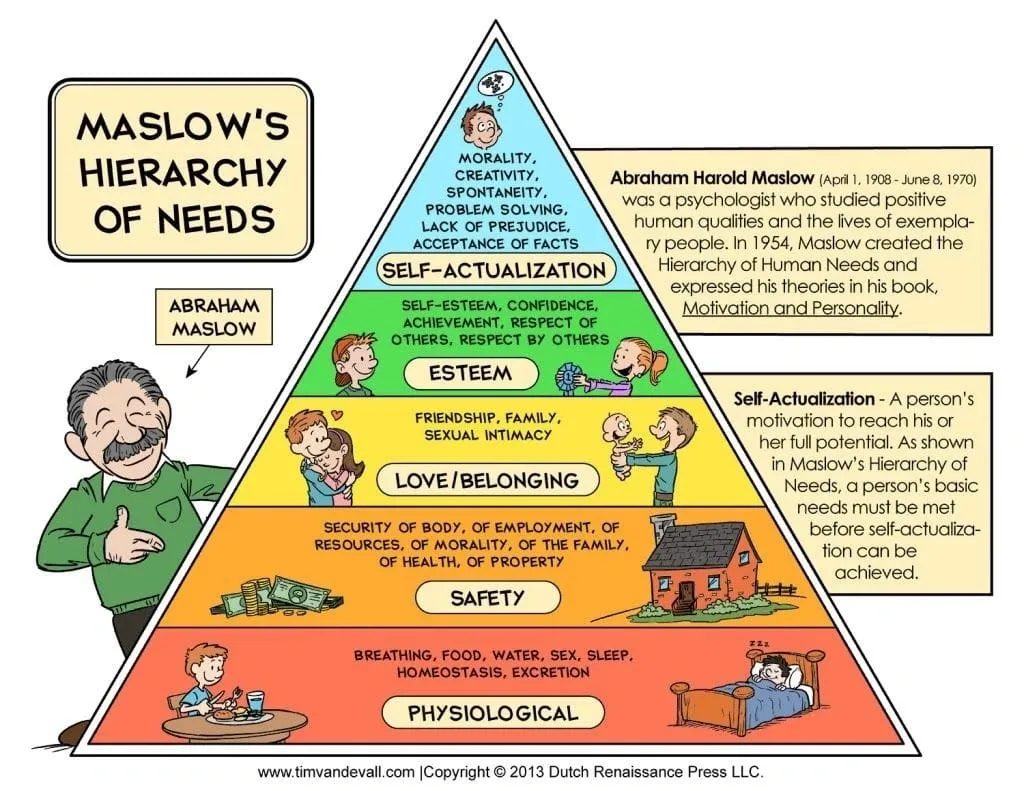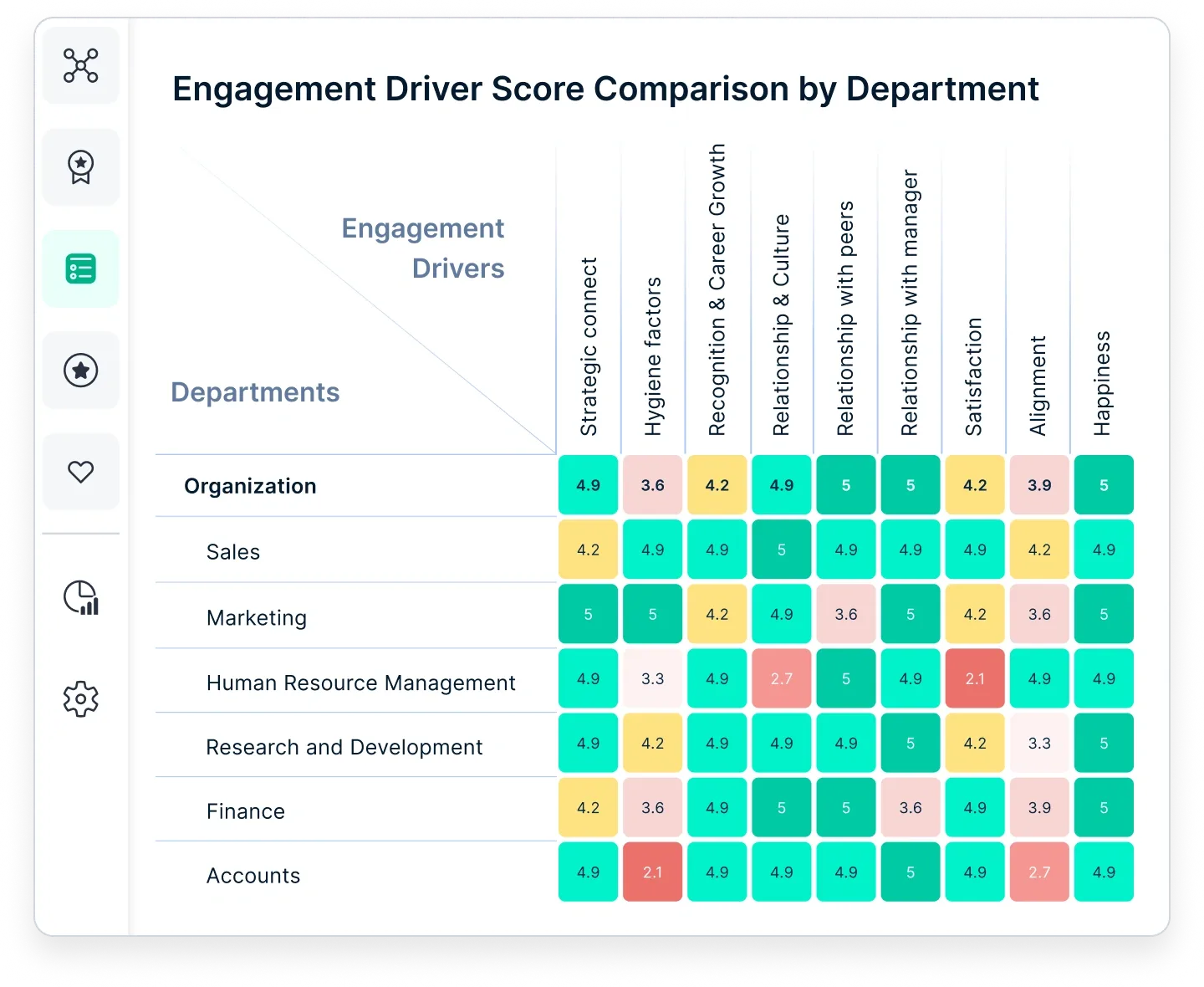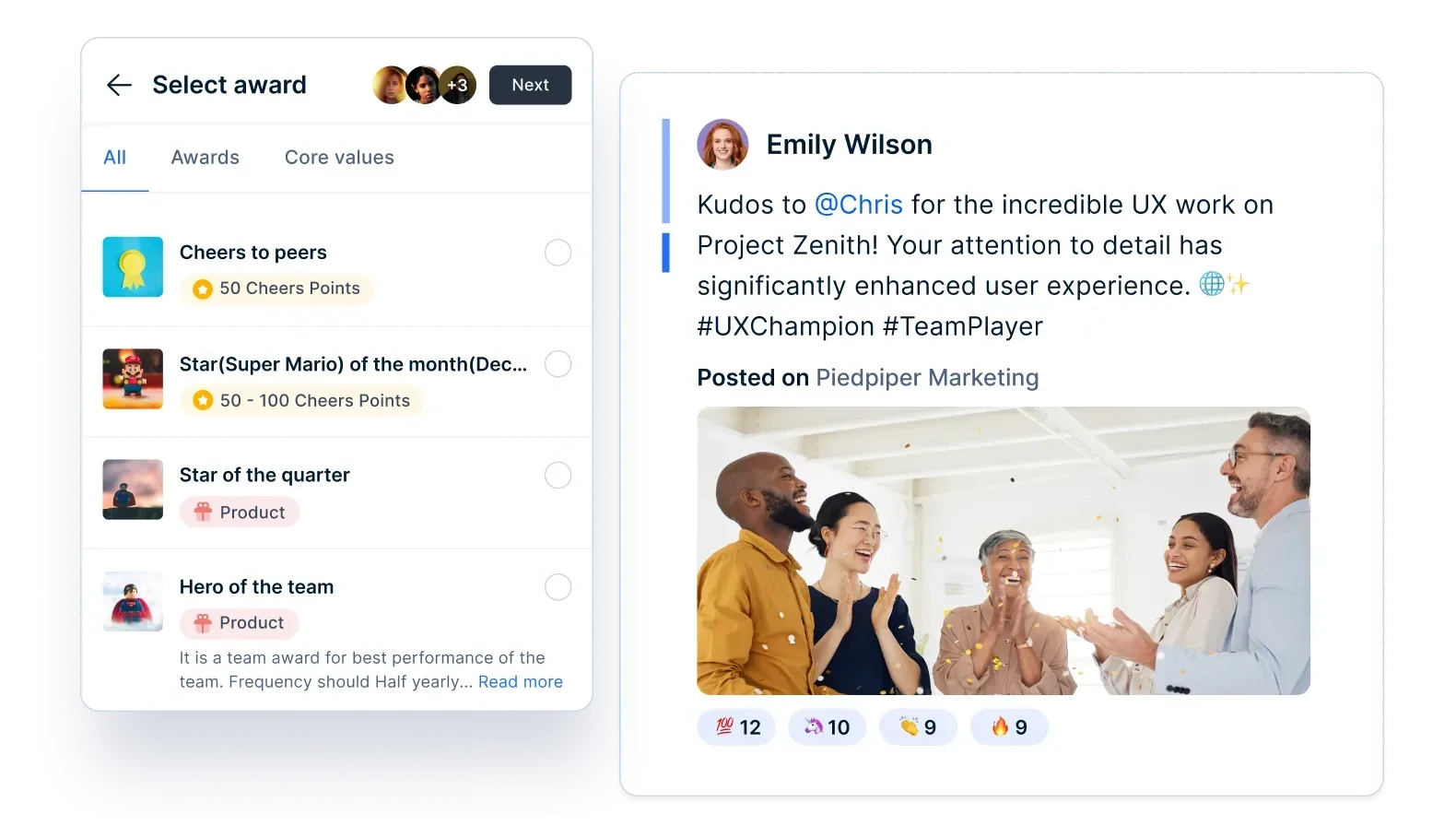11 Proven Employee Engagement Strategies to Boost Productivity in 2025
Explore 11 powerful employee engagement strategies to enhance productivity, boost morale, and retain top talent. Create a motivated workforce with these actionable insights.
On this page
As per a report a staggering $8.9 trillion (about $27,000 per person in the US) is drained from the global economy due to low employee engagement—imagine the transformative impact of unleashing this untapped potential with the correct employee engagement strategies.
Employee engagement is more than a buzzword—it's a driving force behind organizational success. Imagine a workplace where employees are not just clocking in but are genuinely invested, motivated, and passionate about their roles.
This level of engagement doesn't happen by accident; it requires intentional strategies and a deep understanding of what truly motivates your workforce. In today's competitive business landscape, where the cost of disengagement is measured in billions, ensuring that your employees feel valued and involved is not just important—it's essential.
This blog will share a few simple employee engagement strategies that every team member expects from their leader, and if you provide them, then even in today’s fast-paced, ever-changing, highly mobile, and distributed world, they will work to help create highly engaged teams.
Understanding employee engagement
Employee engagement is a critical factor in driving organizational success. It’s much bigger than just job satisfaction—it’s about creating a highly productive and driven workplace environment. Understanding the components and benefits of employee engagement is the first step in developing effective strategies that foster a highly engaged workforce.
As per an article by Forbes, employees tend to leave an organization when they feel ignored or overlooked. Keeping this in mind, let’s have a look at the various aspects of employee engagement and learn management techniques for employee engagement in contemporary organizations.
At its core, employee involvement techniques revolve around several key components: emotional commitment, job satisfaction, and a sense of purpose. Employees who are emotionally committed to their organization are more likely to put in discretionary effort, go the extra mile, and remain loyal to the company.
This sense of purpose, when aligned with the company’s mission and values, forms the foundation of a highly engaged workforce. There are three primary types of employee engagement based on employee attitudes and performance:
- Actively engaged: Employees who are passionate about their work and dedicated to the company's goals. They spread positivity and serve as brand advocates.
- Not engaged: Employees who only complete required tasks, show little interest in the company, and lack proactivity.
- Actively disengaged: Unhappy employees who underperform spread negativity, and discourage others. They are the least engaged.
Benefits of a highly engaged workforce
A highly engaged workforce is a powerful asset to any organization. Engaged employees are more productive, exhibit higher levels of innovation, and contribute to better overall business performance.
Additionally, companies with high employee engagement tend to experience lower turnover rates, increased customer satisfaction, and improved profitability. Investing in employee engagement is, therefore, an investment in the future success of your organization.
As per an article by Indeed, employee engagement tools and techniques lead to an increase in employee retention, increase in customer satisfaction, contribution to innovation, and enhanced company culture.
The research was conducted by Harvard Business Review, wherein a total of 568 individuals participated in the survey, all of whom were employed by organizations with 500 or more employees. Over 42 percent of these respondents came from companies with 10,000 or more employees.
The survey had a global reach, with companies headquartered in North America (54 percent), Asia (18 percent), Europe (16 percent), the Middle East and Africa (7 percent), and South/Central America (5 percent).
Respondents represented a diverse range of industries: 16 percent were in IT/telecommunications, 14 percent in financial services, 12 percent in manufacturing, 9 percent in energy/utilities, 8 percent in healthcare, 8 percent in education, and the remaining 33 percent were from various other sectors.
Seventy-one percent of respondents consider employee engagement to be crucial for overall organizational success. Additionally, seventy-two percent believe that recognizing high performers has a significant effect on employee engagement. However, only twenty-four percent of respondents feel that employees in their organization are highly engaged.
Employee engagement has surged to the forefront of business priorities for senior executives. In today’s fast-paced economy, leaders understand that fostering a high-performing workforce is crucial for both growth and survival.
They acknowledge that a highly engaged team can drive innovation, boost productivity, and enhance financial performance, while also cutting costs associated with hiring and retention in a competitive talent market. Despite this awareness, many executives struggle to find effective ways to measure and address engagement.
However, a growing number of leading companies are gaining a competitive edge by implementing metrics and practices that quantify and enhance the impact of their engagement strategies on overall business outcomes.
The research reveals a disconnect between executive optimism and middle management’s perception of employee engagement. While top executives are generally more positive about engagement levels, three-quarters of those surveyed reported that most employees are not highly engaged, pointing to a significant gap in understanding between executive and middle management perspectives.
Moreover, many companies face challenges in measuring engagement and linking it to financial performance, with fewer than 50 percent effectively correlating employee engagement with metrics such as customer satisfaction or market share.
Yet, a group of companies identified as “high prioritizers” have successfully employed metrics and shared best practices to connect engagement efforts with business performance.
Types of employee engagement techniques
To foster engagement, organizations must implement a variety of techniques tailored to their unique culture and employee needs. Here are some proven strategies:
1. Regular feedback and recognition: Employees need to know how they’re doing and that their efforts are recognized. Regular feedback—both positive and constructive—helps employees improve and stay aligned with organizational goals. Recognition programs, whether formal or informal, show appreciation for employees’ hard work and achievements, boosting morale and motivation.
2. Professional development opportunities: Providing opportunities for learning and growth is key to keeping employees engaged. When employees see a clear path for career advancement, they are more likely to stay motivated and committed. Offering training programs, mentorship, and career development resources can help employees build new skills and advance within the organization.
3. Work-life balance initiatives: Maintaining a healthy work-life balance is essential for employee well-being and engagement. Organizations can support this by offering flexible work arrangements, promoting the use of paid time off, and providing wellness programs. When employees feel their personal and professional lives are in harmony, they are more likely to remain engaged and productive.
4. Employee involvement in decision-making: Giving employees a voice in decision-making processes empowers them and fosters a sense of ownership and responsibility. Involving employees in discussions about company policies, projects, and goals not only leads to better outcomes but also strengthens their commitment to the organization.
11 Employee engagement strategies you must implement in 2025 to boost productivity
These strategies aren’t just ideas on paper—they’re practical ways to create a workplace where people feel connected, valued, and inspired to do their best work. Use these employee engagement strategies to retain your top performers and make them more productive.
1. Clear Direction: Catalyst to a successful employee engagement strategy
The first thing we need to do is to give people a clear direction. If you do not know what the goal and objects of the tasks are, then people can't be able to connect with them. When people lack clarity and direction, it’s difficult for them to become engaged, if not impossible. We should also look to clarify not only what we are doing but also why it is important and if we can explain why, it is important to them, then that’s even better.
As part of the program we were running at Fujitsu, we were moving a client to a new IT platform, so we looked to highlight to the team that they would be the first in the company to gain skills within this new technology which would help give them a competitive advantage and put them in demand for future projects.
2. Creating a safe environment
Nothing kills an effective employee engagement strategy faster than having a blame culture. I see this time and time again where people are criticized for mistakes, and demeaned in front of others for any tiny mishap.
This is a morale killer, it not only stops people from taking risks, but they also look to keep out of the firing line and do the minimum that is required of them, and if it gets too toxic, then they become disengaged completely.
Good leaders create a safe environment where people don’t feel afraid of making mistakes because that fear can lead to hesitation and mistakes. If mistakes happen, then focus on finding solutions, not who’s to blame, and give any feedback in a supportive way that will help people improve rather than highlighting their shortcomings, and also do it in private. Public autopsies of individual failure only make people warier of mistakes.
3. Set them up for success
Ever heard the phrase, “Success has a thousand fathers, but failure is an orphan child” this is one of my favorite sayings because it shows that everyone wants to be part of a winning team.
We all want to feel that we have achieved something, to experience success, and to get rewards and recognition. We are hard-wired for this, one of our basic needs is to have good self-esteem and a little bit of success serves to fill that need.
So, if we can show our teams how to be successful, if we give them the tools, they need to be successful, then not only will they become engaged, but they will become excited to be involved.
People are not afraid of hard work-- they are afraid of failure, and when we as leaders can give them the confidence that they will be successful, then in my experience, they will work hard to achieve it.
4. Give them space to be successful
Whilst I believe that blame is one of the worst things for killing engagement, I must admit that Micro-Management is a very close second. Even with distributed teams, I have seen people become disengaged by managers constantly chasing them up through chats, emails, and phone calls.
It sometimes feels that Micro Managers see virtual teams and people 1000 miles away from them as some challenge and look for new and better ways to keep a close eye on them. Even though we might be working at home, it feels like Big Brother is still watching you.
Don’t do that!
Give your team space; give them a chance to make progress before you check in with them. Ideally, agree with them when it would be a good time for you to come back and see how they are doing.
When you give people space, it shows that you trust them; they will feel respected and those are two feelings that will help to drive engagement.
Now that doesn’t mean that we should never check in; it means that we must do it at the right times and, ideally, at mutually agreed times. Not only will that help with engagement, but it will also help to drive accountability.
5. Give them support when needed
When it comes to making people feel like they will be successful, one of our most powerful tools is to let them know that they have our support and can reach out if needed. This is like giving a trapeze artist a safety net, probably, they won’t use it, but knowing it is there will help to increase their confidence, which will help boost engagement even further.
89% of workers at companies that support well-being initiatives are more likely to recommend their company as a good place to work-American Psychological Association
We should let them know at the start that they can reach out if there are any difficulties or things they are unsure of or need a little help with. This also contributes to creating a safe environment, one where they know that if they start to have issues, not only will they not be blamed or criticized but one where they can get some help.
6. Give them good feedback
With highly distributed teams, we need to ensure the communication channels are clear, open, and in regular use. We need to set up regular calls to share the progress with the teams when they can see that they are being successful this is a great motivation and shows that their efforts are succeeding. It also gives opportunities to provide support when we need to make changes if things are not going well.
Employees feel 5x more empowered if their feedback is valued in the organization. - Salesforce
We also need to praise people for their efforts and good progress. If people put in the work but receive little to no feedback, they can quickly fall into the “I don’t know why I bother” mindset, and when that happens, they are now starting down the path to disengagement.
Positive feedback costs nothing, but the return on investment is significant, give it freely.
As the world changes ever-increasingly, these simple things will help you create engaged teams. They will work with teams that report directly to you; they will work with suppliers and external staff, too, because they help to fulfill some of our basic needs. The better you become at these, the more engaged your teams will become and the better the results you will achieve.
7. Tour of duty
Companies of all sizes - large or small - often have a reactive approach when it comes to employee retention and engagement. They hire new skills and fire employees to save costs.
The approach seems legitimate, serves the business requirements in the short term, but becomes counter-productive in the long term. Employees take the clue from such arrangements. They behave like free agents and jump the jobs whenever a new opportunity comes their way.
Reid Hoffman, founder of LinkedIn proposes an adaptive approach in one of his books The Alliance: Managing Talent in the Networked Age. The approach is called ‘the tour of duty’.
The concept comes from the military where officers work on a single assignment or deployment and then move on to the next, defining their entire military career. This helps them grow their skills and experience and avoid reaching an unexpected plateau in their careers. They get to know the entire organization rather than feeling stuck in a single role for years. The organization also gets to develop the talent from an internal pool of employees and solve their succession problems.
In the ‘tour of duty’ approach, the company and the employee agree on deliverables and expectations from each other, and the timeline of the tour. At the end of one tour, the employee may choose to go on another tour of duty within the company, instead of choosing one with a competitor.
Isn’t it counter-intuitive to encourage employees to seek new assignments? The start-up world has demonstrated that encouraging entrepreneurial employees actually makes employees stay deeply involved.
Will they leave if the company fails to provide another tour of duty? Yes! But keeping such employees even for a relatively shorter time may provide huge benefits to the company and of course, it’s a unique employee engagement strategy.
How is ‘tour of duty’ different from normal -” hire, check for performance, continue or let go”? In the case of ‘tour of duty’, it is amply clear that the arrangement is going to end. The promise to the employee is not just a salary; it is increasing his / her employability.
The duration is pre-decided, and it is usually kept at two years. There is no fuzzy expectation of “being a good employee” and no fuzzy commitment to the employee. Time-limited mutual commitment with clear goals and expectations is the hallmark of ‘tour of duty’. This may seem transactional but is better than buying time for money and driving employee retention via vague notions of loyalty.
8. Alumni networks and employee peer networks
Some of the leading technology companies such as Intuit actively run alumni networks. The benefit is obvious - tap into the network intelligence. At one end, such initiatives enable HR to tap back into the past talent for a rehire or get recommendations on new hires. However, more importantly, companies stand to benefit from the knowledge and information with people outside the company.
Traditional wisdom may dictate to shun away past employees, sign strict contracts, treat exists as permanent. However, once again, lessons from start-ups and some forward-looking organizations have demonstrated something new. It is far more rewarding to engage your employees, alumni, and employee networks than to shun it without maintaining undue apprehension.
Build and activate the network of your employees. Teach them how to seek and reach out to such networks. Inform your employees about non-public vs proprietary information. The latter is confidential and must not leave the walls of the company.
On the other hand, non-public information is what they can exchange and seek, such as newer trends they are observing in the industry, changes in the technology, etc. Encourage them to expense meals with outsiders and in return share their learning within the company.
Create an alumni network on LinkedIn, organize major events at company premises, invite influencers to speak, offer free tickets to your alumni and their guests. Take every opportunity to build relations.
If you don’t have enough resources to pull off such elaborate programs, simply go round the table, ask for new information that the team has come across lately. And in return, simply offer heartfelt appreciation to share this information which they might have gathered from alumni or their own network. Eventually, employees will start recognizing networks and actively manage those.
9. Employee well-being support mechanisms
Whether you like it or not, whether you want to acknowledge it or not, your employees do come to work while they are battling challenges in their personal lives. Broken relationships, major health issues, terminally ill family members; the list is endless when it comes to work-life balance.
The common wisdom will guide you to expect employees to come unaffected to work and deliver 100% on their goals and shine. However, as the HR leader, you know that your engagement initiatives and programs are probably not giving you desired results because you are not connecting with your employees deeply enough.

Source: Dan Martell
Patty Azzarello, a former corporate leader and now a business consultant and coach, mentions that she was able to increase the engagement and performance of her team members with a simple question “what do you want me to worry about you?”.
With this simple question, she created a trusted environment for people to open up and share their vulnerabilities in personal lives and emotional connections which were affecting their performance. She then went on to facilitate helping the employee transition out of his / her challenge by offering support.
How do you as the HR leader bring about such strategies in your organization and institutionalize those? Consider engaging experts - be it life coaches, trained instructors from globally recognized spiritual organizations, lawyers, physicians, etc. who provide life skills and expert advice on a regular basis.
Formal programs such as these which are done continually offer employees a chance to go deeper and make the most of these facilities. Don’t just organize dental check-ups. Go beyond and invest in your employees in a structured manner and more deeply. Sure, there would be cost associated.
But think of the cost of attrition and the cost of disengagement which is huge. Such programs offer HR the opportunity to improve employee experience, productivity, engagement on the job, and other associated metrics that directly impact the firm’s profitability.
10. Businesses know-how
People, in general, are stuck in their small world - limited friends, limited issues about life, and work. With this view, even a small problem assumes a big disturbance. But once we truly realize how nominal our existence is on the planet and the galaxy, we get a bigger and newer perspective about our lives. Similar is the situation in modern workplaces.
Most likely, employees at your organization are busy with their core jobs - day in and day out, without knowledge of what’s happening in other teams and divisions or geographies. A technical team member might not be interested in how marketing is promoting the company’s software products. And a salesperson might not be interested in how logistics is meeting the challenges around inventory, and pilferage.
Perhaps all they know is via the newsletter from the CEO. And that siloed work environment makes their world too small within the company. This limited vision about their work and the company’s operations makes it easier to trip off and disengagement can happen at any time. Employees get stuck with very minor discomforts and may end up leaving jobs or underperforming.
There is a way out of this. Make them see the larger picture. Make them see where their job fits into the money-making for the company. Help them understand how the company fits into the overall industry and how perhaps the industry is fairing with the overall economy.
Encourage them to teach and share business know-how. Formalize routine programs where such know-how exchange happens. Document and socialize these learnings. Start with understanding the nuances of your company.
As the business book author Josh Kafuman outlines, to understand any business, know the five core parts of any business - value creation, marketing, sales, value delivery, and finance.
Value creation is about creating a product or service to offer to the customers, marketing is about generating interest of customers, sales is about signing up customers and accepting money, and finally value delivery is about actually delivering products and services the customers have paid for.
Apply the same model to understand businesses that are similar to that of yours. Such foundational models will help HR to understand the business themselves and garner the support of the leaders and managers to improve the business know-how of all the employees, thereby creating meaning around their jobs.
11. Inter-team collaboration
Not just in large companies, but even in companies with 150+ employees, teams compete more than they should be collaborating with each other. This is one of the major problem areas which business leaders face and it’s of utmost importance in improving employee experience.
HR leaders can play a key role in helping business leaders achieve the required collaboration among teams and business units and improving the productivity of the entire organization. Teams bid for the same projects and compete to get a major share.
They try to hire and build skills for themselves instead of borrowing those from other teams. Eventually, the skill sets in the entire organization get skewed, and business leaders find themselves in the difficulty of maturing the organization with more relevant skills to deliver on new business opportunities. Who is then asked to solve this skills conundrum? You, the HR leader!
Such scenarios of lack of collaboration and inter-division rivalries happen as teams do not understand the roles that play to create value and deliver value. They may understand at an information level, but they might not have internalized other team’s challenges and uniqueness. Take this opportunity and make them wear each other’s hats or get into each other’s shoes.
5 Common employee engagement mistakes to avoid
Many managers unknowingly adopt strategies that harm employee engagement. Here are some common mistakes that reduce workplace morale and productivity.
1. Setting unrealistic expectations and threatening job security
Managers often set unattainable goals and use threats like job termination or pay cuts to enforce them. A CBC report highlighted how TD Bank employees faced immense pressure to meet unrealistic sales targets, leading to unethical upselling. While managers may believe this boosts productivity, it increases stress, lowers engagement, and contributes to high turnover.
2. Playing favorites
Favoritism is widespread in workplaces, where managers grant special privileges based on personal relationships. A study of U.S. business executives found 56% favored certain employees for promotions, while 30% of HR professionals acknowledged favoritism in their organizations. This practice lowers morale, engagement, and job satisfaction while increasing turnover and workplace conflict. Effective leadership requires fairness and transparency to maintain a motivated workforce.
3. Micromanaging employees
Some managers excessively control their employees' work, undermining trust and creativity. Micromanagement leads to disengagement, as employees feel undervalued and restricted.
4. Failing to recognize employees
Many managers overlook employee recognition, often citing time constraints or skepticism about its necessity. However, a SHRM study found that 84% of employees believe recognition positively impacts engagement. A culture of recognition boosts morale, productivity, and job satisfaction.
5. Offering meaningless incentives
While incentives are essential, they must be meaningful. Vague or unclear bonus structures leave employees feeling undervalued.
The Business Journals suggest structured performance-based incentives that are "clear, measurable, and realistic." Employers should offer a mix of financial and non-financial rewards tailored to employee preferences.
Instead, employers should offer more meaningful incentives to employees by providing a wide range of incentives. Meaningful incentives can help to boost morale, improve productivity, and motivate employees to continue performing well. Employers need to give employees a choice to select their preferred motivations.
For example, on Empuls global catalog of incentives, employees can choose from several options to find what motivates them.
Essential tools assess employee engagement
To effectively assess and enhance employee engagement, organizations can utilize various tools such as surveys, social intranet platforms, and feedback mechanisms.
1. Pulse surveys and feedback platforms: Regularly gathering employee feedback through pulse surveys and other platforms allows organizations to stay attuned to employee sentiments and needs. These tools can provide valuable insights into areas where engagement is strong and where it may be lacking, enabling timely interventions and improvements.
How can Empuls help?
With Empuls, you can understand employee satisfaction levels and uncover the reasons behind the scores. Dive deeper to get insights into attrition, assess motivation, uncover team performance, gauge happiness, and measure workflow efficiency.

Leverage real-time sentiment analysis and benchmarked heat maps to understand the areas of improvement and develop a plan of action.
2. Employee recognition software: Implementing employee recognition software can streamline the process of acknowledging and rewarding employees’ contributions. These platforms often include features like peer-to-peer recognition, points-based rewards systems, and automated recognition for milestones, making it easier for organizations to celebrate success consistently.
How can Empuls help?
With Empuls, you can recognize your colleagues with multiple award types. There’s value badges, spot awards, and peer awards for in-the-moment recognition.

Use Approval-based awards to seek nominations and include jury panels. Share performance and incentive-based awards for various types of goals.
3. Internal communication tools: Effective internal communication tools, such as intranets, chat platforms, and project management software, help keep employees connected and informed. By facilitating seamless communication across teams and departments, these tools contribute to a more collaborative and engaged workforce.
How can Empuls help?
Align everyone with your culture with Empuls. Keep everyone on the same page by sharing company news. Build trust with two-way, transparent communication. Communicate how everyone can contribute to your culture and vision.
Celebrate every achievement, big and small, as a team. Engage with interactive content formats: gifs, polls, videos etc.
4. Learning management systems: Learning management systems (LMS) offer employees access to a wide range of training and development resources. An LMS can be used to deliver online courses, track learning progress, and provide certifications, helping employees continuously develop their skills and knowledge.
Conclusion
Employee engagement is essential for organizational success. By implementing techniques like clear communication, regular feedback, professional development, and work-life balance initiatives, organizations can create a highly engaged workforce.
It’s important to remember that there is no one-size-fits-all approach to employee engagement. Organizations must adapt these techniques to their unique culture, goals, and employee needs to achieve the best results.
To build a more engaged and motivated workforce, start by implementing these proven employee engagement techniques. If you’re ready to take the next step, get in touch with culture experts to help you develop a tailored engagement strategy that drives success.
For personalized support in developing your employee engagement strategy, get in touch with the culture experts at Empuls.
FAQs
1. What are the 5 C's of employee engagement?
The 5 C's of employee engagement are:
- Clarity – Ensuring employees understand their roles and company goals.
- Confidence – Empowering employees with the right tools and training.
- Convey – Encouraging open communication and feedback.
- Connect – Fostering strong relationships and teamwork.
- Congratulate – Recognizing and rewarding achievements.
Implementing these 5 C’s is a key employee engagement strategy to improve productivity and workplace morale.
2. What are the 4 types of employee engagement?
The 4 types of employee engagement are:
- Highly Engaged – Passionate and committed employees.
- Moderately Engaged – Satisfied but not fully invested.
- Barely Engaged – Minimal effort and motivation.
- Disengaged – Unmotivated and likely to leave.
Adopting effective strategies for employee engagement can help move employees toward higher engagement levels.
3. What are the 4 P’s of employee engagement?
The 4 P’s of employee engagement are:
- People – Building strong teams and relationships.
- Purpose – Aligning employees with company mission and values.
- Progress – Providing growth opportunities and career development.
- Praise – Recognizing and rewarding contributions.
These elements form the foundation of strategies employee engagement, ensuring a motivated and committed workforce.


















